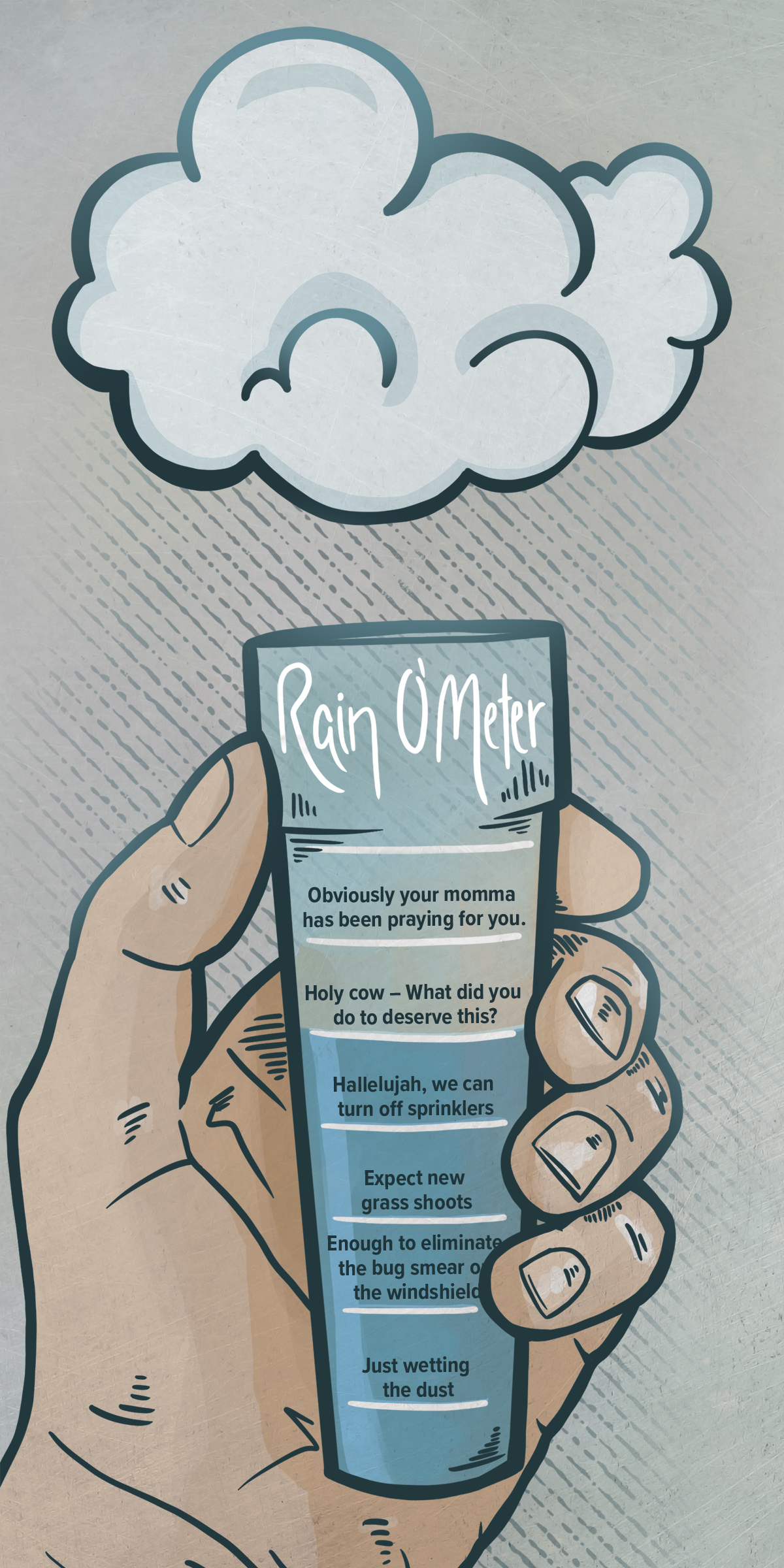I personally just enjoy rain. Having grown up in Idaho and lived here my whole life, I think I have come to understand what a few days of rain mean to our state and the farming community. Recently, we had a few days of rain, which I thoroughly enjoyed. But people are often commenting and saying things like, “If it would have only come earlier,” “It just messes up my spraying schedule,” “It’s not as good as a week of snow,” “It doesn’t do much for the reservoirs,” or “I’ve got things to do.” So I got to thinking about it – when is the best time to get moisture?
 Illustration by Kristen Phillips.
Illustration by Kristen Phillips.
So what does a week of rain mean at this time of year? The Eastern Snake Plain Aquifer has about 7,000 irrigation wells, not counting domestic wells or stock water. If you shut half of them off (or about 3,500 wells), they each pump about 1,500 gallons per minute (gpm) or 6.63 acre-feet per day; that would save about 23,205 acre-feet per day. A week of that would equal 162,435 acre-feet – in just one week.
So how much is that? What does that mean or what can you visualize that being? Island Park Reservoir holds about 132,205 acre-feet of water when it is full, and Little Wood Reservoir holds about 30,000 acre-feet of water, so the two of them would equal about 162,205 acre-feet of water. A lot of water, right? So I think you could safely say a week of rain this time of year would at least equal that – plus the domestic wells and the natural recharge from it. And that comes out to be a lot of water. It would take a lot of recharge to put that much water back into the aquifer.
Plus, rain makes all the dry farmers smile just a little bit. So when is the best time to get moisture? Any time. As Grandpa use to say, “When you live in a desert, don’t cuss the rain.”

.jpg?t=1687979285&width=640)


.jpg?height=auto&t=1713304395&width=285)


